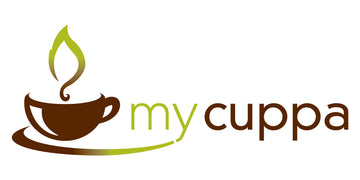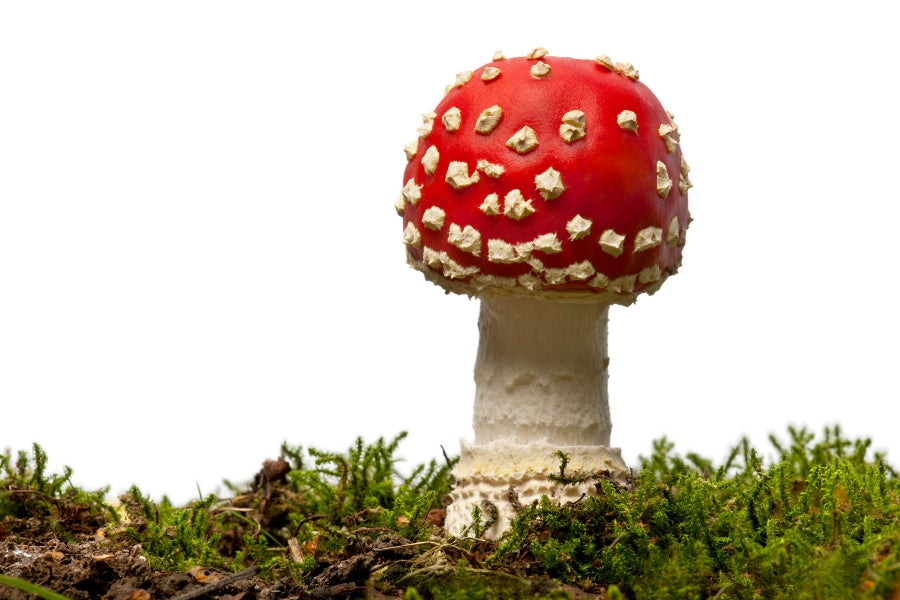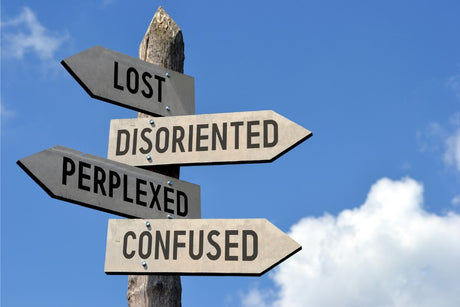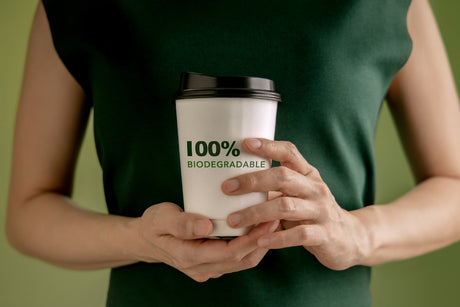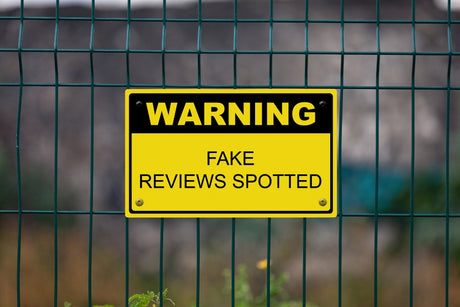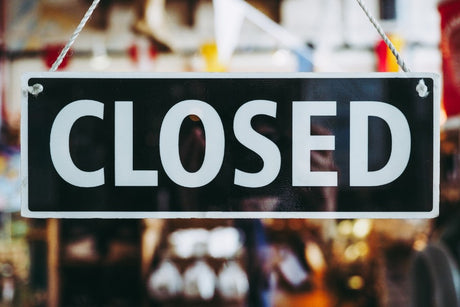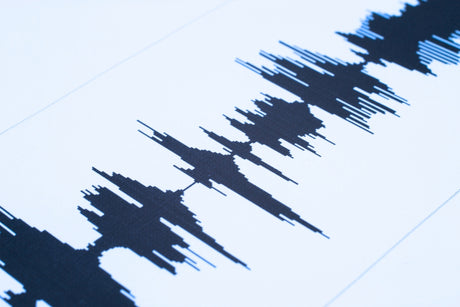Did we open a monster can of worms in 2010 by publishing our thoughts in a blog on the realities of mycotoxins in raw coffee?
The Contact Us page on our previous platform would be inundated daily with requests from people asking us to help advise them "which of our coffees are mycotoxin-free".
It was accidental that we somehow stumbled upon a "raw nerve".
But then it became tedious, annoying, and time-consuming, repeating the same responses thousands of times.
Of course, you have to believe that my heart and soul are in the right place - trying to help people understand that the issue doesn't exist here in Melbourne or within Specialty coffee.
It was like we had inherited a MythBusters mantle, yet we were neither a myth nor a buster.
Sadly, so many people out there had a self-induced phobia of believing that all coffees have mycotoxins or mould spores.
It's not true, and after 40 years of being around coffee, I still haven't seen or detected mycotoxins yet.
Since 2010, we have updated this blog a few times as we share our thoughts on the reality of working with coffee all day.
Firstly, we get it.
Somewhere, you read it on the internet, or perhaps somebody has told you that raw coffee, like so many other agricultural ingredients, is mouldy and drowning in mycotoxins - awful for your health.
That's OK; everyone is entitled to believe anything they want.
Many individuals are motivated to maintain high levels of personal health and, therefore, are more cautious about what goes into their bodies.
Some brands on the web (not only selling coffee) might find ways to prey upon insecurities to extort premium margins by labelling their products as either low in mycotoxins or mycotoxin-free.
We have seen it already with a few Australian coffee brands claiming their coffee is "mould-free".
One example caused us to almost fall off our chairs at "mould-free coffee" claims.
The reason we thought it was hilarious is due to their location. It's an area of Australia where it's not unusual to see small retailers or sellers "stretch" the truth about "ultra health conscious" products and their benefits.
We are not going to name and shame here.
It was their only way of establishing a point of difference, as their coffee was no different to everyone else.
So, instead of offering their unique selling points, they created an illusion.
Selling coffee in Australia is a tough gig with many brands in a crowded and competitive market, but stretching the truth like that is just not fantastic.
Claiming their product has a "special" or "functional" feature, which is superior to other suppliers, entitles them to sell it at a price premium.
Who is keeping them honest? Unfortunately, nobody.
Out of curiosity, we dug deeper to discover many big red flags.
This particular "mould-free coffee" brand is based where it's warm and tropical.
It is also well known for high rainfall humidity and is prone to regular or extreme flooding.
It broke all the rules or conditions required for holding mould-free coffee.
It got even better.
A quick look at Instagram, goodness me, a warehouse with no apparent cooling methods or additional ventilation, constructed in an elemental tin with raw coffee elevated off the ground in racking.
Yet with all these bad practices and significant mistakes, their claims on a flashy website, alluring images and convincing copy, the reality was quite shocking - but unless you worked in the industry, it was not evident or apparent.
We hate seeing people ripped off or paying a premium for a product not correctly validated, audited or regulated.
Back here in Melbourne, the air is much dryer and less humid, warehouses are much more giant (with exceptional airflow), and the construction materials are thermally superior.
Oh, and some of us with deep experience have installed coolers to maintain a constant temperature year-round.
Sometimes, the sellers making the most noise about their ethical and healthy coffees might also need to care more about the proper processes to manage those qualities.
Before we delve into the details, we must declare that we are not chemists, doctors or scientists—just realists.
Hence, the apparent disclaimers apply - our article may contain technical errors,
We are about to explain here, dear readers, the practical realities of how coffee is farmed, processed, stored, transported, roasted and sold, e.g., the supply chain.
What is a mycotoxin?
According to Wikipedia, mycotoxin is a group of fungi/moulds that colonize food crops or products, including animals. It can survive reactions from temperature extremes (hot or cold) and digestion in certain conditions.
Of the nine major types of mould species, we will focus on Ochratoxin A, or OTA, as it most closely relates to the kind found in beverages and vine-grown plants such as coffee trees.
If you read and understood the effects of mycotoxin on the human body, it might scare you enough to give up drinking coffee and live a caffeine-free existence.
However, as with any information, it must be balanced and in perspective. If you also lived by the same rules for other food and beverages, your life would be tricky trying to eliminate many everyday products.
Some Self-Help Medical or Nutrition websites offer essential guides to help reduce mycotoxins when consuming coffee.
Unfortunately, these guides tend to be ultra-idealistic and might border on factual errors or run a real risk of misleading consumers.
Let's take a look at some of the published recommendations for reducing mycotoxin levels in coffee:-
Drink coffee made via wet processing.
"Washed" coffee is one of the most common methods for processing cherry (coffee).
In particular, many origins such as Central America (Costa Rica, El Salvador, Honduras, Nicaragua, Guatemala) along with African (Kenya, Tanzania, Rwanda, Burundi, and some Ethiopian and Ugandan coffees are all washed), Indo-pacific (Sumatra, India, PNG, Timor), South America (Colombia, Panama, Mexico, Bolivia).
Mycotoxins often form during drying; wet beans are much less likely to contain them than dry beans.
On this point, I'm afraid I have to disagree with these statements as being technically correct.
There are two primary methods of processing coffee - wet (washed) and dry (sundried), with a few variations to these methods, such as wet-hulled (Indonesia), semi-washed, and honeyed.
Since 2017, coffee farmers have been experimenting with innovative processing methods with various styles of fermentation to help enhance flavour and sweetness.
Experimental processing methods are now standard in the specialty segment, where grades, quality, and prices are much higher.
In Australia, washed arabica coffees are popular and used by many specialty roasters due to the higher levels of sweet acids, which work well with milk or dairy alternatives 90% of coffee drinkers add to their coffee beverages.
Dry processed coffees are standard in Brazil and parts of Ethiopia.
The ratio of dry coffee beans versus washed coffee beans imported into Australia changes daily. It's close to 50/50.
We sit about 65% washed and 30% dry, with 5% experimental.
The statement about washed coffees being safer than dry coffees is complete rubbish. You can't generalize that way, as the safety is 100% reliant upon the care and attention applied by the farmer or the processing Co-Op at the origin.
If they employ good practices and have the appropriate levels of infrastructure, there can be no reason why one method is safer than the other.
Putting on my practical realist hat, you must understand that most coffee is grown in 3rd world countries at extremely high altitudes with limited water, utilities (power) and infrastructure (weatherproof warehouses, milling equipment, cleaning supplies).
Coffee production is labour-intensive and heavily influenced by weather patterns, resulting in end quality that depends on the farmer's skill and resources.
Farmers want the best price possible for their crops, so they are not going to take shortcuts or do a crap job.
To put this in context, many coffee farms are only minor or small in size.
Farmers work hard for months to grow crops.
Will they make mistakes during processing? No, that's the most critical part of the coffee processing lifecycle.
Let's explore the risks associated with the wet processing of coffee.
This method requires a considerable amount of water. That's the first problem.
On the sides of mountains, capturing and storing water at high altitudes is difficult as it likes to run downhill very fast. Make sense?
With many farms having little power or equipment up in those mountains, managing water is always a constant challenge - often, they manually cart water on the backs of animals.
The other myth buster here is that coffee farmers recycle the water for processing.
Proper handling of the processing of washed coffee is crucial. It involves several stages, from ensuring that filters are not left soaking for too long in the tanks to using proper techniques for drying the coffee and ensuring adequate drainage.
Drying is a critical stage in the process as it is the main factor that can impact the quality of the coffee. Therefore, it is essential to dry the coffee correctly.
Do not drink decaffeinated coffee.
Caffeine protects coffee beans from mould growth and can prevent large amounts of mycotoxins from growing.
As I am not a scientist or chemist, I can't address this issue specifically - but the statement is inconclusive.
Decaf coffee is made from traditional raw coffee beans with a highly controlled, chemical-free decaffeination process.
Would the mycotoxin level of decaf have been a pre-existing condition? Essentially, this statement contradicts the "best to drink washed coffees".
Decaf is washed 100 times more than conventional coffee to remove caffeine.
The published precautions are unclear about whether removing caffeine increases the risk of mycotoxins developing.
In other words, are they referring to something that may occur between decaffeination and consumption, e.g. the storage of the raw decaffeinated coffee beans before roasting?
Choose arabica beans over robusta beans.
Though robusta varieties do have higher levels of caffeine, they also contain more mycotoxins.
I will leave this one to the scientist or the robusta zealots to argue for or against.
Consider the environment in which your beans are grown.
Because mould is less apt to grow at higher elevations, buying beans harvested in the mountains of Central America is a great way to decrease the amount of toxins in your coffee.
The mountains of Central America are not the only destination where high-altitude arabica is grown.
Again, this is another example of a "guide's" incomplete and minimal advice.
Almost every origin is generally capable of preparing superb, high-quality coffee, but they are also equally capable of generating low-quality coffee at various altitudes.
Stay away from blends.
This one is my favourite misleading advice.
"Though blended coffees may taste good, there is no way of telling where the different bean varieties have come from. Try to stick to single estate products rather than the major brand names".
The author of the text "A Red Rag to a Bull" seems to lack experience or understanding of how coffee works.
They have used an extreme example from the past (circa 1970) to create a sense of fear.
This approach is not helpful for people who want to learn more about coffee.
It's laughable and a load of rubbish.
Roasters often use blending techniques to achieve their coffee's desired flavour and consistency.
Conspiracy theories abound regarding how roasters only blend to save money, using the cheapest and nastiest coffees they can source and mixing in small quantities of good stuff to keep the flavour respectable.
Seriously, back we go to 1970.
Hello, it's 2023, and there are no surprises; it's very hard to sell quality coffee, regardless of how well it tastes.
Brand owners don't throw their reputation away by using "untraceable", "unknown origins", and "unknown quality".
I won't talk about other coffee brands.
The same high-grade, specialty quality single origins we sell in our store are the same coffees in our blends.
If we wanted to use different-grade coffees for our blends, it would be impossible - we don't have free space the size of the MCG.
Coffee does not taste the same year-round - it's a simple fact.
Blending complementary beans minimizes issues related to variable supply and growing conditions while adding character.
Roasters don't like holding large quantities of raw coffee.
It costs a lot in working capital (and the all-important cash flow), and holding a lot of raw coffee consumes physical space.
Mould or fungus might develop in raw coffee storage (or transit) if the raw coffee was prepared poorly, stored in warm and humid environments or if there is poor ventilation.
Most quality coffees these days have hermetic liners on the bags. In fact, in 2014, we introduced a policy of not purchasing coffee within liners.
99.9% of raw coffee is moved worldwide in standard shipping containers without cooling or ventilation.
Some coffee-growing origins suffer port congestion. In countries such as Ethiopia, PNG, Tanzania and other land-locked sources, the raw coffee might sit in basic tin sheds, sweating for months, awaiting movement.
These are the conditions where OTA is likely to be an issue, yet the raw coffee is never tested or measured by farmers, Co-Operatives, exporters or importers.
So, this is the first critical reality check for those worried about mycotoxins in coffee.
There is no measurement or testing of mycotoxins in raw coffee at any stage in the supply chain.
Mycotoxin management is effectively an oxymoron at this time and has been since the dawn of the coffee industry.
With no controls or records being processed from the farm to the cup regarding mould or mycotoxins and the raw coffee packed in specially sealed liners and stitched bags, there is no sampling or checking performed other than random border control (customs) testing for a limited range of known pests such as borer.
Moisture levels, relative bean density, and occasional water activity readings are the basic measurements performed on raw coffee.
Export and import brokers use Moisture levels and density as critical factors as they negotiate quality and price contracts. It can also help the coffee roaster develop a roast profile.
Why using defective coffee is a bad idea.
Australia is well known for having one of the world's highest standard espresso coffee preparations.
A consequence of this high standard is the competitive environment driven by increasing demand for better qualities and grades of coffee.
With the growth of specialty coffee and single-estate sourcing, the local and global coffee industries still need vital tools and processes for managing mycotoxin reporting.
Having purchased more than 1 million kilos of raw coffee, we know our local Australian-based coffee brokers don't offer or categorize their coffees based on the mycotoxin level.
In other words, I can't order a bag of mycotoxin-free coffee because that product does not exist.
When we inspect origin records, there are no mentions or references to mycotoxin readings either when the coffee was exported (shipped) or imported (received).
As a realist, I would like to see the discussion about mycotoxin continue. Still, it needs practical input from the industry to balance the, at times, extreme commentary that emerges on issues relating to personal health published on the internet by authors who don't work inside the industry nor have practical, realistic experience of handling raw coffees.
What about Roasted Coffee?
Australian coffee roasters use higher-quality imported coffee beans compared to many other countries.
This is due to our coffee drinkers demanding better-tasting coffees and the competitive market conditions with thousands of brands battling for your spending.
In a detailed lab report, Dr. Illy from the famous Italian Illy brand stated that roasting coffee eliminates traces of mycotoxin.
Dr. Illy was the most respected subject matter expert in coffee.
No additional proof or explanation is necessary to confirm that roasted coffee is mycotoxins-free.
What are the risks of mycotoxins in coffee?
A primary risk of mycotoxin development occurs in processing the harvested cherry, packaging, transportation and storage.
It has nothing to do with the altitude at which coffee was grown or practices deployed by the farmer during the growing and picking.
Specialty coffee brands have incredible pride in their raw coffee selections.
They fuss and labour almost as long as the proud coffee farmers.
Specialty coffee brands also care about how their raw coffee is packaged, stored and roasted - they can only afford things to go right by ignoring the simple, common-sense procedures.
For all the doubters, conspiracy theorists and web article experts out there who feel compelled to argue or debate with anyone willing to engage - please go and visit coffee farms, spend time in broker's warehouses and then visit a coffee roaster and see the reasons why there is no possible way for mould or spores to survive.
NOTE - we do not conduct visits in our warehouse and roastery.
